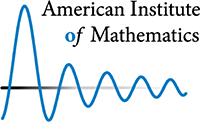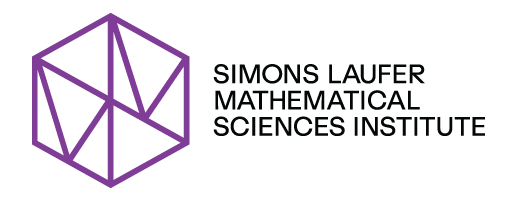
The Importance of Chemotaxis to the Health of Coral Colonies
Chemotaxis is a mechanism by which organisms navigate their environment using chemical sensors. When mathematician Sasha Kiselev, University of Wisconsin, heard a lecture at the IMA by Jeffrey Weiss, Department of Atmospheric and Oceanic Sciences at the University of Colorado, about broadcast spawning, when egg and sperm are released at separate locations are then brought together by fluid...

Crystals in Number Theory
During the spring semester of 2013, the Institute for Computational and Experimental Mathematics hosted a special program devoted to common themes in automorphic forms, combinatorial representation theory and multiple Dirichlet series. A particular focus was placed on computer exploration and the joint development of the required computational tools within the open source mathematical system...

Disproof of Wall’s Conjecture
During the June 2012 AIM workshop, “Cohomology bounds and growth rates” a counterexample was found to a group theory conjecture formulated by G. E. Wall in 1961. A mathematical group is a set along with an operation that combines two elements to form a third element of the set and satisfies certain other axioms. A familiar example is that of the integers with the operation of addition. The...

Distinguishing Knots
An old question in mathematics is: how can we distinguish between knots? If we imagine a knot tied out of a piece of rope, the most basic problem is to tell if the knot can be “undone” by moving the rope around without breaking it. Although it may be difficult to see immediately, the following is an example of a knot which can be undone in this sense: i.e. the knot on the left can be...

Symplectic Dynamics
During the 2011-2012 academic year, the School of Mathematics held a special program on Symplectic Dynamics led by Helmut Hofer and John Mather. Symplectic Dynamics is an anticipated new field focusing on Hamiltonian systems using highly integrated ideas from the theory of dynamical systems and symplectic geometry. In recent years a number of applications of symplectic geometry to Hamiltonian...

AI for Chemical Design
Exploration of chemical compound space unites quantum chemistry with artificial intelligence By combining quantum chemistry with artificial intelligence (AI) or Machine Learning, core participants of the long program, “Navigating Chemical Compound Space for Bio and Materials Design”, achieved a scientific breakthrough expected to aid in exploring chemical compound space, i.e. the virtual space...

Strawberry Fields Forever
How does our society conserve water resources and still enjoy an abundant food supply? The Pajaro Valley, in the Monterey Bay area of California, is ideally suited for agriculture. There one can see acres and acres of fruit trees, vegetable, berries, and flowers. In fact, the Pajaro Valley and the nearby Salinas Valley produce nearly half of the 2 billion pounds of strawberries grown in the...

Understanding Microtubules
Microtubules are hollow rods approximately 25 nanometers in diameter. They undergo continual assembly and disassembly within a living cell and serve as long-distance “superhighways” for motor-based intracellular transport. The dynamics of microtubule self-assembly are of great interest for medical reasons since microtubule assembly-promoting drugs are used to treat cancer. More recently, they...

Math of Planet Earth
Mathematics of Planet Earth 2013 An initiative to devote the year 2013 to mathematics of the planet earth was begun by the thirteen North American mathematics institutes and now also includes mathematical societies and other scientific organizations from around the world. The goal of event is to highlight the role mathematics will play in understanding the complex processes of the earth and the...

Fractal® Sound Barrier
The study of the vibrations in domains with boundaries or interfaces of irregular geometry is a complex mathematical problem, for which many questions are still unsolved. Nevertheless, it has been known for a long time that objects of irregular shape or geometry are “bad resonators.” From the seminal work of Bernard Sapoval, a physicist at the Ecole Polytechnique (France), this idea was...